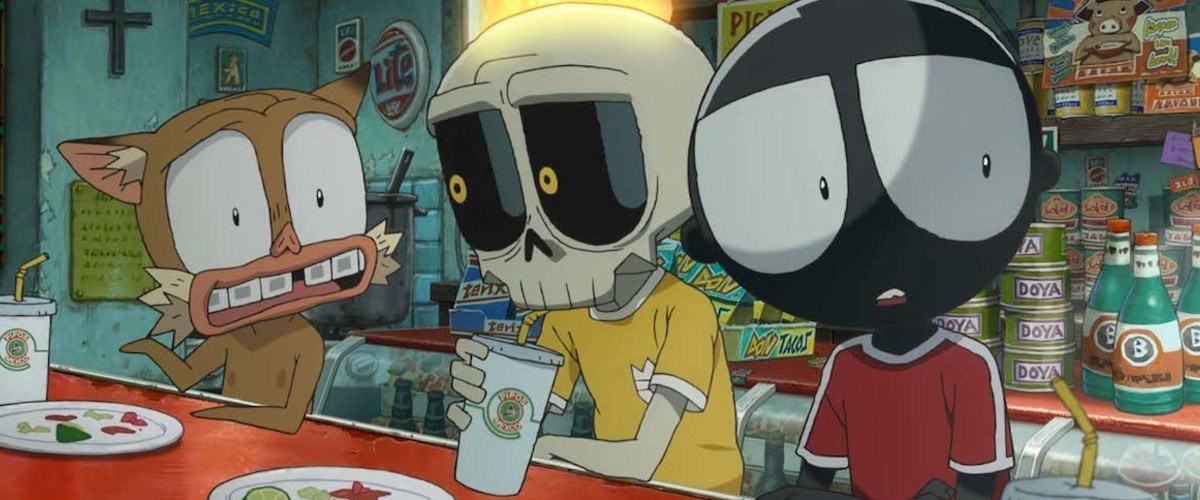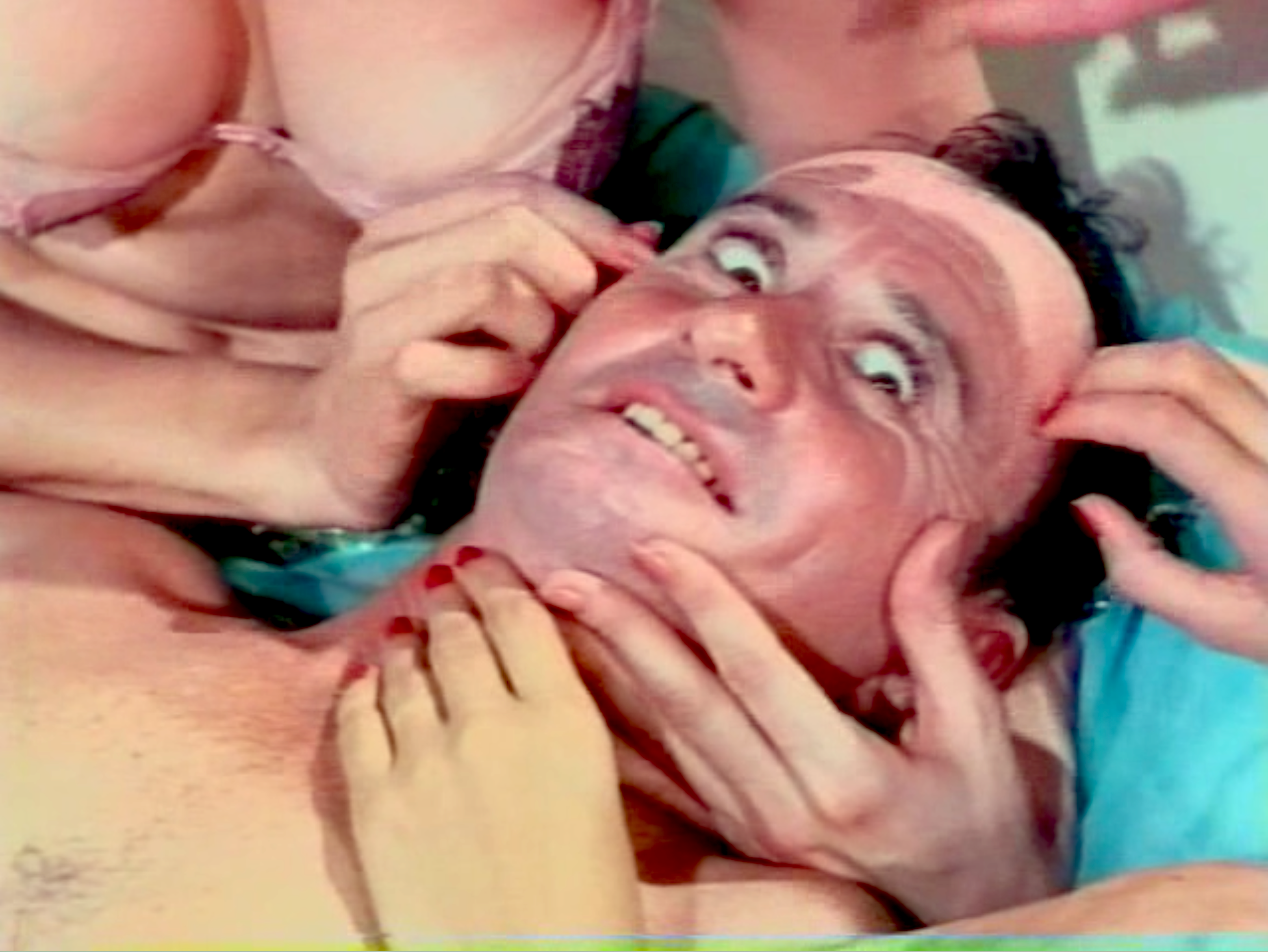
Ralph Bakshi’s 1975 film Coonskin presents its audience with so much racially charged, controversial and deliberately offensive material its impossible to formulate a response as you watch it. How do you make sense of a scene where an effeminate stereotype of a gay man who is wearing “six shooters” and talks like John Wayne is ordered by a mafia don who speaks-ah like-ah dis and looks like a grotesque blob of fat and hair, to kill the “nigger” who is a tall skinny, black (as in black, not brown) man with a rabbit head and big sambo lips?
The offensive imagery tumbles out at tremendous speed. Live action footage of minstrel shows, nazi propaganda about Jews, hyper sexualized depictions of women, it never rests for a moment. Even as a satire it’s an awful lot to swallow. In a documentary about a very controversial art collective called Laibach, Slavoj Žižek brings up the idea of homeopathic art. The idea is to inject some of what ails a society into the society in order to provoke a reaction, an immune system response that will fight against the infection. Laibach holds heavy metal, Nazi propaganda rallies that would terrify anyone. With Laibach the line between critiquing the problem and contributing to the problem is very blurry.

Bakshi may be trafficking in dangerously loaded imagery but the line seems more clearly drawn. Coonskin is a comedy and encourages as much laughter as it does shock. We do not laugh with characters but we don’t laugh at them either, The comedy is in the depiction. Its in grotesquely exaggerated depictions of a world we both recognize as well as wish to deny.
In considering who is laughing and who is being laughed it is conceivable that a clutch of Klan members could watch Coonskin and enjoy it without concern for it being satire. They could ignore the irony and the parody and choose to see it as simply a comedy, but this may speak more about the nature of the Klansmen than the film. The Klan already lives in a world of satire. It is not satirical to them, but to the outside world it is a ludicrous, polarized parody of reality. Mistaking Bakshi’s satire for straightforward comedy illustrates the Klan’s inability to distinguish truth from falsity.
The film opens with a live action close up of Scatman Crothers singing a-cappella, “I’m a minstrel man, I’m a cleanin’ man, I’m a poor man, I’m a shoe shine man, I’m a nigger man. Watch me dance. I got the devil in me, its the man you see, got the devil in me, its the man you see. Walk on niggers walk on… Ive been shot on, pushed on, passed on, gassed on, red, white and blued on, now I’m waiting to turn on.”
Fifteen years later Ice Cube would release a similar song called The Nigger You Love to Hate. The chorus is a call and response between a group of women and Ice Cube. The women yell, “Fuck you Ice Cube!” Then Ice Cube responds, “Yeah, ha-ha, it’s the nigga you love to hate!” The women repeat “Fuck you Ice Cube!” And Ice Cube responds,“Hey yo baby, your mother warned you about me, It’s the nigga you love to hate!”
Both songs put the singer in an ambiguous almost contradictory position. They celebrate their status while simultaneously condemning it. In the layered world of race and representation both of the images below are distorted ideas of black men that our culture repeatedly presents to both white and black alike.

If you want to engage with Coonskin you are going to have to get dirty. You can’t talk about race without using racist language. As soon as you begin a sentence with “Black people…” You have already cornered yourself. Bakshi fearlessly dives right into the thick of it. As a white man his “fearlessness” may be couched in privilege but it is not as though nothing is at stake. Releasing a movie like Coonskin could have easily ruined his career, and there was in fact plenty of protest and controversy when it came out.
The film is a retelling of the Br’er Rabbit folktale. Br’er Rabbit is actually an Americanized version of an Ashanti, West African story about Anansi The Spider. Anansi is perhaps the most celebrated and well known of the African folk heroes. He is clever and mischievous and his cunning gets him both into, as well as out of, trouble.
In one Anansi story he is trying to catch a fairy. He covers a doll in sticky sap, places it under a shady tree and puts a bowl of yams in front of it. The fairy comes, eats the yams and thanks the doll. When the doll does not answer, the fairy is offended and ends up tousling with the doll. By the time the dust settles the fairy is completely stuck to the doll and unable to move. Among its many lessons the story speaks about how someone who is helpless can overcome a powerful foe but also speaks toward an understanding of the tangled and fraught relationship between oppressor and oppressed who end up inextricably bound together.
In America as the story was retold in a new context, Anansi became Br’er Rabbit. Br’er rabbit is made famous when Disney decided to make an animated film called Song of the South featuring the story. The film has been removed from circulation for its racist messages but it had a deep and lasting cultural impact, not the least of which is the main character, a rabbit, in Coonskin.

In Disneys version it is the rabbit (Anansi’s stand in) who falls victim to the sticky doll, which is now called the tar baby. When the fox comes to eat Br’er Rabbit, Br’er Rabbit uses reverse psychology. He pleads with the fox not to be thrown into the briar patch. The fox falls for the trick and throws Br’er Rabbit in but because Br’er Rabbit is small he is able to scurry under the thorns and use them as protection while he makes his getaway.
All of this is the underpinning for Coonskin. The roles of who sticks to who get positioned and repositioned revealing the tangled relationship of America, race, and identity. One scene where this is all encapsulated is the meeting between Mrs. America and a young black man.
Mrs. America is an enormous woman with a figure that could only be possible in a cartoon. She has a perky upturned nose and perky upturned nipples, blonde hair, freckles and is dressed in a skin tight, American flag, cat suit. With her breasts jutting out like star-spangled footballs she stands in the street while the young black man, who is half her size, tries to put the moves on her, “Hey honey it has been good for us, I mean, me and I. See our relationship has increased a ton fold since these here few years. And I’m so happy and lucky to feel that we is finally gettin it together. You know where I’m comin’ from? So how about Mrs. America come over to my place and let me squeeze yo tits.”

She rips up a fire hydrant and smashes him over the head with it, then stomps on his head with her high heels. She scoops him up and whips out a pair of brass knuckles which she uses to pummels his face. Bloodied and disoriented the man turns to the audience and says, “Oh, I should have fucked her when I had the chance.”
This pornographic vision of fecund bounty is another version of the tar baby. She uses fantasy instead of tar. It is the American dream that lures you and traps you. It’s the three bedroom house with a two car garage and a white picket fence that you are unable to let go of.
Coonskin provides a different iteration of this story where the tar baby is a cross and a naked, obese, Baptist, priest who dances and preaches a “kill whitey” gospel is crucified on it with giant posters of Elvis and John Wayne and Richard Nixon.

Just as all these references and ideas are thrown around so too is the imagery. There is an impressive number of different visual techniques employed in the film. Parts are live action, parts are animated but often it is some kind of combination of the two. It is not an effort at seamless integration like Who Framed Roger Rabbit. It is a smashing together of forced juxtapositions where different levels of abstraction clutter the screen in a visual representation of what the film is doing ideologically.
As a means of depiction, photographs occupy a special status. They are seen as faithful to reality. This gives them authority, “If it is a photograph it must be real.” Cartoons are necessarily less real. The word cartoon can be used to describe a drawing, or it can also be used to describe a drawing’s content as a satirical image. Mixing the respected authority of photographs and the freedom of cartoons creates a uniquely flexible and fertile arena from which to work. In addition, within the world of cartoon images there are different levels of abstraction, resulting in different levels authority. The more naturalistic a cartoon is the easier it is to see as realistic. Bugs Bunny is seen as less real than the depictions of rabbits in Watership Down. In Coonskin Bashki freely mixes all these different approaches. There is a wide range of imagery from naturalistic to highly abstracted silhouettes.

We are presented information as an artifact, an illustration, a satire, and as an abstraction. We are in a hallucination where the real world is just barely visible through the imagery. It is a collage that harkens back toward the Dadaists and forward toward the post-modernists. However it is positioned, it provides Bakshi withe a maximum of freedom to stumble where ever the movie leads.
Coonskin was made during the height of the blaxploitation film phenomenon. Like Shaft or Blacula, it immerses itself in popular culture, black culture, and the world of crime. The “xploitation” part of “blaxploitation” films is misleading. It was not a genre that exploited black people, it was a genre that catered to black people. It was made by black people, starring black people, for the entertainment of black people. There is much more to unpack here but in terms of Coonskin the film was a collaboration between black and white artists. Bashki hired several black graffiti artists as well as cartoonists to work with him on the film. All of the voice actors were black including a young Barry White.
The stickiest part of the formula is who the movie was made for. There were protests against the film when it was shown at The Museum of Modern Art in New York City. Roger Ebert gave it 3 out 3 stars. Paramount dropped the picture under pressure from groups like Congress of Racial Equality, but the NAACP came out in support of it.
The fact that the film is difficult to pin down may speak to its success as a satire. Satire is often simply an exaggerated version of the truth. It doesn’t present a completely insane world that is foreign to us, but a completely insane world that is uncomfortably familiar. In Coonskin Bakshi not only satirizes the world in which we live, he satirizes the images that we have produced to depict that world. Bakshi shoves the Godfather, Aunt Jemima and John Wayne in a blender and takes joy at the bloody mess that results.

If you enjoyed this article click here for more
www.filmofileshideout.com/archives/cartoonish-depictions-in-a-cartoon-the-controversy-over-mutafukaz




Hi ! Just wanted to let you know I really liked your article on Coonskin and cited in one of my university essays! Very good stuff!
[…] If you enjoyed this article click here for morewww.filmofileshideout.com/archives/the-thorny-matter-of-coonskin […]